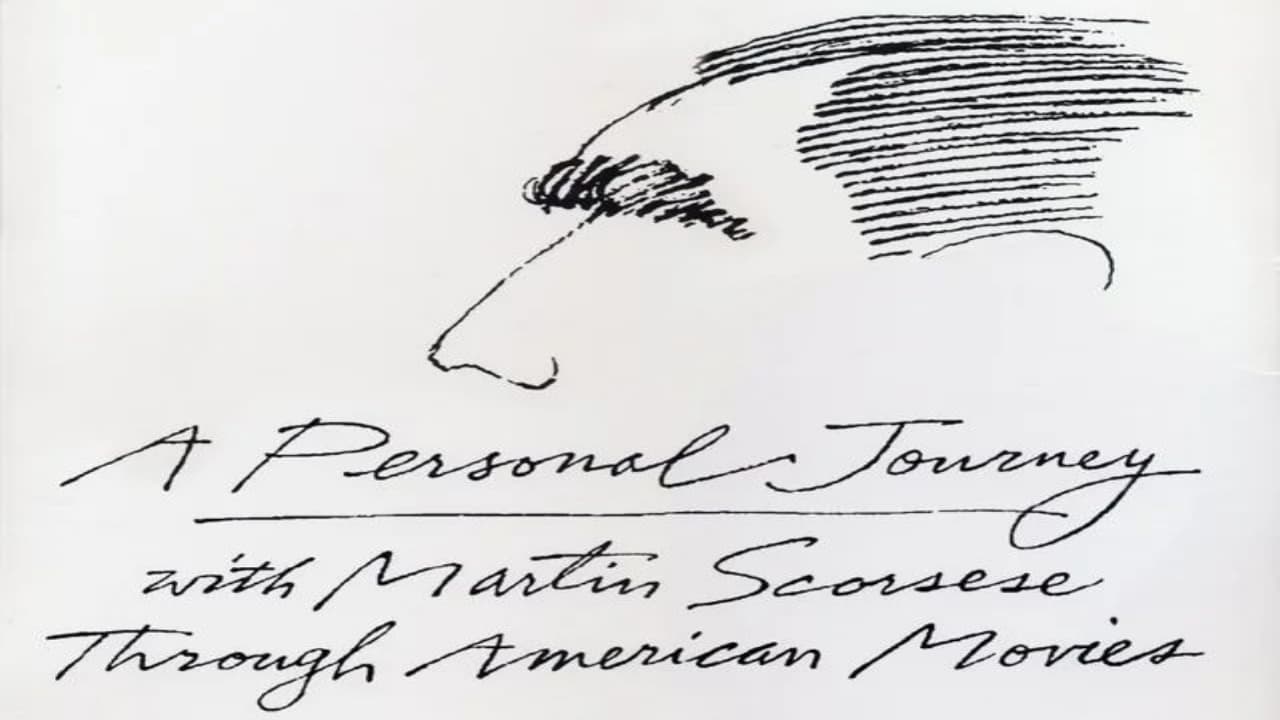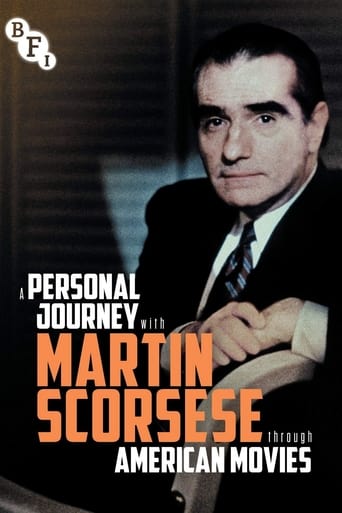



Overrated
An action-packed slog
It's one of the most original films you'll likely see all year, which, depending on your threshold for certifiably crazy storylines, could be a rewarding experience or one that frustrates you.
View MoreThis is one of the few movies I've ever seen where the whole audience broke into spontaneous, loud applause a third of the way in.
View MoreThre isn't a single Scorsese movie I'd place on a list of my favorite movies. But this is the best thing I've run through my DVD player in about five years. Scorsese's patient elucidation of favorite film moments, and how Hollywood works is incredibly gracious, calm and intelligent. It's 3 DVD-sides worth of material. It would have to be a British production, since everything about American corporate culture would have trampled the quiet, methodical, no frills, put-the-focus-on-the-content approach that is taken here. And an American production would have demanded he say he liked only movies that were popular favorites. I wish everyone took a page from his love of movies. You should love the movies you do for personal, idiosyncratic and specific reasons. Not just more "Me-too" votes for The Godfather, etc.. People have no clue what ideas are being explored in their favorite movies. If they did, movies would be more interesting than they are. Scorsese DOES know what ideas are being explored, and that makes him a compelling, involved speaker on the topic. I really appreciate his articulate, generous interviews over the last decade.On a negative note, Scorsese is best when he's excited to show you some obscure movie, rather than when he's didactically teaching you something well-established about film history. And I do wish he pluck those three hairs out of the bridge of his nose. It's very distracting.
View MoreWhen the British Film Institute asked Martin Scorcese to create the American part of its Century of the Cinema series, he grabbed the opportunity with both hands. A Personal Journey through American Movies is a fascinating, wide-ranging and, as the title says, a highly personal look at Hollywood cinema.Scorcese's story is primarily about Hollywood's directors actors, producers, screenwriters and other collaborators barely get a mention. He states right from the beginning that for him the primary conflict within the film industry is that between the director's vision and the distributor's profit motive, between art and commercial viability. He even opens with a clip from Vincente Minnelli's The Bad and the Beautiful, one of the earliest films to openly explore this contradiction. This dictates the structure for the documentary. Scorcese looks at how genres have darkened and clichés have become challenged, how mavericks have challenged the production code, and how certain filmmakers fell from grace when they dared to be different. However, Scorcese never falls into the auteurist trap of dismissing directors who consistently pleased the studio bosses (he lavishes praise on Cecil B. De Mille), or those who had less of a recognisable style but were master craftsmen of the cinema nonetheless.Scorcese doesn't necessarily focus on his absolute favourite directors either (Orson Welles and Alfred Hitchcock, two of Scorcese's biggest influences, are only mentioned in passing). Instead, he looks at the individuals and the films that serve to tell his story. For example, he shows us a succession of John Ford films to show how the western evolved. He looks at the work of Vincente Minnelli (probably the most often referenced director of the documentary) to show how a supposedly wholesome genre like the musical could also have darker undercurrents. I can imagine that, had this assignment not been limited to America, Scorcese would have also loved to talk about, for example his Italian influences or his British hero Michael Powell. As it is, he stretches the definition of American movies to include both the Hollywood films of immigrant directors such as FW Murnau, Billy Wilder and Douglas Sirk, as well as the work of US-born filmmakers that was produced elsewhere such as that of Stanley Kubrick.Rather than simply tell the story of Hollywood chronologically, Scorcese compares films from various eras in order to tackle various subjects. In his section on the language and tools of cinema, he begins with DW Griffith, looks at the coming of sound, colour and widescreen and inevitably ends up going over computer generated effects which, although Scorcese is not keen on them, he is even-handed enough to include clips of George Lucas and Francis Ford Coppola defending them. However, he doesn't simply finish the chapter here as if this is the end of it. Instead, he then rewinds back to the 1940s, to show how a low-budget horror like The Cat People can achieve effective results from the simplest and cheapest of elements.A Personal Journey through American Movies has to be one of the best film documentaries made. There were a number of outstanding directors and pictures which I would never have discovered without, and even the most seasoned of film buffs would be likely to find something new in its broad scope. Scorcese has also restored the balance to forgotten or undervalued pictures. I was pleased to see that, when he talks about Kubrick in his "Iconoclasts" chapter, he looks at Lolita and Barry Lindon, for me his two most underrated films. Scorcese's respect for the medium is on display in the way he allows clips to play out fully, rather than just giving us tiny bits, and he interrupts them with talking heads (a combination of archive and new interviews) only when necessary. There is a bit of bias towards the 40s and 50s, but that is hardly surprising since it is the era in which Scorcese grew up and discovered cinema. And after all, I don't think this documentary could have been achieved had it not been a personal journey.One word of warning though, in its in depth look at certain pictures, this documentary does contain a fair few spoilers.
View MoreSpoilers herein.Popular culture plays a central role in inventing a life, the first tenet of which is choosing which sources to ingest. Scorsese is worthy of exposure: he is earnest and skilled.But the second law of conscious self-invention is a matter of which ideas and notions you cleave to. For me, Scorsese doesn't make the cut and none of his films are on my `worth watching' list, including this one.That's because Martin has a perspective on film that misses the real magic, the value. His review of important directors here clearly shows this. It is as valuable in revealing the cleft between him and others more creative as its intended purpose in `revealing film.'Scorsese believes film is a child of the theater and that the purpose of both is to allow us to explore the humanity of each other. His commitment to film mirrors his earlier commitment to the ministry. All his films can be clearly seen in this light -- and so can his `personal history' of film. Even the form of this documentary turns out to be an exploration of a single, interesting being. And the evolution from early films is traced in singularly one-dimensional path of human exploration to the latest evolution shown: the extreme Cassavetes. Cassavetes makes pure emotional `encounter' pieces.All well. But there are richer notion of film, and art. And life. These have less to do with the character of what we see than HOW we see it and HOW we react, probe. Who we are is more the issue, especially when encountering self as a process of the art.Contrast Scorsese to his peers dePalma and Coppolla. All of Scorsese's projects are anchored in the character. The camera is slave to the character. All action, indeed the whole environment revolves around the person, even emanates from them. His world of `Goodfellas' is a world of people surrounded by space that we passively watch and sometimes follow.Coppolla on the other hand lives in the visual assembly. His mind is situated not in the center of the character's heart, but in the filmmaker's hands. That's why we get cinematic effects of action in one place paralleled or superimposed on action in another, amplifying both. The drama is moved by the situation (mostly the visual situation) and the characters are just objects in the tide. It is very intelligent, this manner of composition. It is a little too mannered in fact for my taste, but it is intrinsically a cinematic art (both words emphasized), far from where Scorsese comes from.Or consider dePalma. He is something between and more clever. His projects are even more selfaware, and anchored by the camera -- the Eye. His eye places the audience not in a theater seat, but makes us God. We swoop into and around the action, abstractly separated from it. The camera has motivation and expresses curiosity, determination equal to that of a character. Coppolla creates montages after Eisenstein; dePalma, great eye poems after the manner of Tarkovsky.Take your pick. I prefer the narrative intelligence of dePalma, but both he and Coppolla know something about the magic of cinema that eludes mister Scorsese. Taking his work to be important art, the stuff one uses to form a mind, is a lazy decision.
View MoreThank the Lord for Martin Scorsese, and his love of the movies.This is the perfect introduction into the mind of the most talented American artist working in cinema today, and I couldn't recommend it more. I was enthralled through the whole thing and you will be too. Just relax and let him take you on a ride through his world, you'll love it.
View More